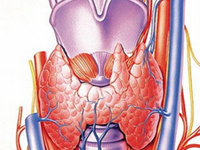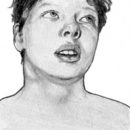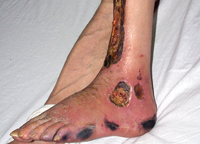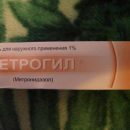What complications are fraught with a thyroid removal operation? Answer to this question you will find in the article.
Content
Thyareoxic crisis
It occurs in patients with preceding thyrotoxicosis that did not receive treatment or not in full. The clinic is manifested in the operating room or in the resuscitation ward. Hyperthermia, sweating, tachycardia, nausea, vomiting, pain. Tremor and inhibition can progress to delirium and coma. Treatment includes large doses of physiological solution or potassium iodide intravenous, 100 mg of cortisol, oxygen therapy, large doses of glucose, water and electrolyte balance correction, temperature decrease. Mortality is approaching 10%.
Bleeding from wound
 Occurs during the first hour after the operation. The causes of respiratory disorders serves a small amount of blood in deep spaces behind the trachea, which can cause the obstruction of the respiratory tract (0.3-1%). Treatment: Immediately. In the opiration - revision of the wound, evacuation of clots to normalize pressure on the surrounding fabrics, banding blood supply vessels.
Occurs during the first hour after the operation. The causes of respiratory disorders serves a small amount of blood in deep spaces behind the trachea, which can cause the obstruction of the respiratory tract (0.3-1%). Treatment: Immediately. In the opiration - revision of the wound, evacuation of clots to normalize pressure on the surrounding fabrics, banding blood supply vessels.
Damage to the returning gentle nerve
When conducting operations on the thyroid gland is 1-3%. Maybe one- or bilateral, temporary or permanent. With paralysis of the Gundy muscle, voice ligaments take the average position. The voice becomes mastering. Bilateral vocal ligament paralysis does not prevent air passage.
Hypoparatyosis
0.6-2.8%. More (up to 9%), with malignant diseases, during relapses. Rarely arises as a result of removal of all glands, more likely due to damage to their blood supply. Minimum risk when lubricating thyroid vessels. Porish-shaped glands with impaired blood supply can be crushed and implanted inside the breast-eyed-and -ide muscle.
The clinic is manifested during the first day after the operation. Circular numbness of limb, tingling, fingertips, alarm feeling. Early appear positive symptoms of the cavity, then a trusso and carpopaed spasm. Care of convulsions are possible. Calcium level in serum is reduced, phosphorus elevated. Condition may be transient (several days) or permanent.
Treatment begins with administration intravenously 10 ml of 10% glukendt calcium, then drip 2-3 ampoules every 8h. For permanent hypoparathyroidism, vitamin D is needed (rokaltrol 0.25-0.5 μg in 0.25-0.5 μg daily in addition to calcium), measurement of calcium and phosphorus levels. With hypoparathyroidism, phosphorus levels are elevated. Low level is noted when «Syndrome of hungry bone».









